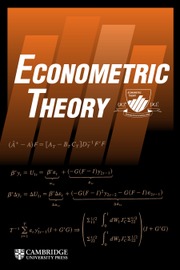Article contents
HAS THE PHILLIPS CURVE FLATTENED?
Published online by Cambridge University Press: 24 October 2025
Abstract
We contribute to the recent debate on the instability of the slope of the Phillips curve by offering insights from a flexible time-varying instrumental variable (IV) approach robust to weak instruments. Our robust approach focuses directly on the Phillips curve and allows general forms of instability, in contrast to current approaches based either on structural models with time-varying parameters or IV estimates in ad-hoc sub-samples. We find evidence of a weakening of the slope of the Phillips curve starting around 1980. We also offer novel insights on the Phillips curve during the recent pandemic: The flattening has reverted and the Phillips curve is back.
Information
- Type
- SPECIAL INVITED PAPER
- Information
- Copyright
- © The Author(s), 2025. Published by Cambridge University Press
Footnotes
We thank B. Antoine, R. Verbrugge, J. P. L’Huillier, and seminar participants at the 2023 EC2 Conference, the Federal Reserve Bank of Cleveland, the Federal Reserve Bank of Philadelphia, and the 2022 Women in Econometrics Conference for comments. This research has been supported by the Spanish Ministry of Science and Innovation under grant PID2019-107352GB-I00. B.R. acknowledges funding from the European Union (ERC GA: 101096215) and the Spanish Agencia Estatal de Investigación (AEI), PID2019-107352GB-I00 and Severo Ochoa Programme for Centres of Excellence in R&D (Barcelona School of Economics CEX2019-000915-S).
References
REFERENCES
- 1
- Cited by

